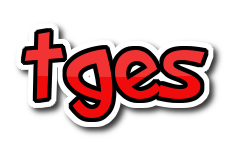Studying nursing or medicine in the USA or Canada offers numerous opportunities and rewards for aspiring healthcare professionals. Numerous scholarships and funding options are available to help offset the costs of your education. Understanding the landscape of healthcare education in these countries is essential for making informed decisions about your academic and career paths.
International students can navigate the application process with the right resources, ensuring a smooth transition into their chosen programs. Exploring study and work opportunities allows you to gain valuable experience while pursuing your degree. Additionally, recognizing the requirements for licensing and certification will set you on a clear path to success after graduation.
🔥 Our offer: canada, usa
Key Takeaways
- Scholarships and funding are accessible for healthcare studies.
- International students have various support networks available.
- Gaining work experience while studying is beneficial for your career.
Overview of Healthcare Education in the USA and Canada
Healthcare education in the USA and Canada offers a range of programs for aspiring professionals. Degrees in nursing and medicine prepare you for various roles in the healthcare sector.
In the USA, education often follows this pathway:
- Pre-medical studies: Undergraduate degree with a focus on science courses.
- Medical school: Four years of graduate education.
- Residency: Hands-on training that lasts from three to seven years.
In Canada, the route may differ slightly:
- Bachelor’s degree: Nursing programs vary from 2-4 years.
- Medical school: Typically a four-year program post-undergraduate.
- Residency: Completion crucial for practicing as a doctor.
Both countries emphasize practical experience through clinical placements. You will find that accreditation is essential. Programs must be recognized by relevant authorities like:
- Accreditation Commission for Education in Nursing (ACEN) in the USA.
- Canadian Association of Schools of Nursing (CASN) in Canada.
Scholarships and funding options are available to support your education. These can help reduce the financial burden. Research scholarships offered by universities and government programs for healthcare students.
Most importantly, clinical competencies gained during training are pivotal. These prepare you for real-world challenges in healthcare settings.
Paths to Studying Nursing and Medicine
When considering a career in nursing or medicine, there are distinct paths you can take. These paths are typically broken down into undergraduate programs and graduate or professional degrees, each offering unique opportunities and requirements.
Undergraduate Programs
Undergraduate programs in nursing usually lead to an Associate’s Degree in Nursing (ADN) or a Bachelor of Science in Nursing (BSN).
- ADN: Typically a 2-3 year program focused on foundational nursing skills.
- BSN: A 4-year degree that covers broader topics such as leadership and community health.
Admission often requires prerequisites like biology and chemistry courses. Completing an undergraduate program generally leads to eligibility for the National Council Licensure Examination (NCLEX-RN), necessary to become a registered nurse.
For undergraduate medical studies, you usually start with a Bachelor’s degree in a related field, often completing required courses in biology, chemistry, and physics.
Graduate and Professional Degrees
For those pursuing advanced careers, graduate programs are crucial.
- Master of Science in Nursing (MSN): Takes 1-2 years post-BSN and allows specialization in areas such as nurse practitioner roles or nurse education.
- Doctor of Nursing Practice (DNP): Focuses on clinical practice and typically takes an additional 2-3 years after obtaining an MSN.
Medical professionals usually pursue a Doctor of Medicine (MD) or Doctor of Osteopathic Medicine (DO). This process includes:
- Completing a bachelor’s degree.
- Attending medical school for 4 years.
- Undergoing residency training for 3-7 years.
Both paths require commitment and substantial funding but lead to rewarding careers in healthcare.
Exploring Scholarships and Funding Options
Finding the right scholarships and funding options is crucial for studying nursing or medicine in the USA or Canada. Various avenues can help ease the financial burden, including government scholarships, private scholarships, and institutional financial aid.
Government Scholarships
Government scholarships are often offered at the federal, state, or provincial levels. In the United States, programs such as the Pell Grant provide financial assistance based on need. Eligibility typically depends on your income level and other factors.
In Canada, provincial governments offer programs such as the Canada Student Grant, which includes support for low-income students. Both countries have specific application processes, often requiring you to fill out a Free Application for Federal Student Aid (FAFSA) in the U.S. Make sure to meet deadlines and gather all necessary documentation.
Private Scholarships
Private scholarships can significantly assist students in covering tuition costs. Organizations, foundations, and businesses frequently provide these funds. Websites like Fastweb or Cappex allow you to search for scholarships based on your profile, including your field of study and personal background.
Examples of well-known private scholarships include the Gates Millennium Scholars Program and the Jack Kent Cooke Foundation Undergraduate Transfer Scholarship. Each scholarship has unique eligibility criteria, so review them closely to ensure you fit the requirements before applying.
Institutional Financial Aid
Many educational institutions offer their own financial aid programs. This can include merit-based scholarships, need-based grants, or work-study opportunities. Check with the financial aid office of the schools you are interested in for specific options.
In addition, some universities may offer dedicated funds for nursing and medical students. Ensure you are aware of all deadlines for applying, as institutional aid can vary significantly between schools. Many institutions have dedicated resources to help you find applicable aid.
